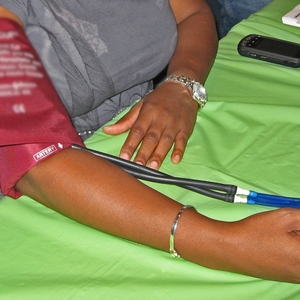
03 Feb Residential Segregation Contributes to Hypertension in Black and Hispanic Adults
MedicalResearch.com Interview with:
Xing Gao, MPH, lead author and doctoral candidate in
Dr. Mujahid’s research group
Mahasin Mujahid, MS, PhD, FAHA
Lillian E. I. and Dudley J. Aldous Chair in the School of Public Health
Associate Professor of Epidemiology
Director, Epidemiology & Biostatistics Master of Public Health Program
UC Berkeley, School of Public Health
MedicalResearch.com: What is the background for this study? What are the main findings?
- Hypertension is a major risk factor for cardiovascular diseases, and persistent racial and ethnic inequities in hypertension remain an urgent public health challenge.
- Public health researchers need a more nuanced understanding of how structural factors contribute to these inequities, which has a direct application to improving the cardiovascular health of marginalized populations.
- This study examined associations between racial residential segregation, a product of historical and contemporary racially discriminatory policies, and hypertension in a multi-racial cohort of middle-aged and older adults.
MedicalResearch.com: What are the main findings?
- Our main finding was that living in segregated neighborhoods is linked with a higher risk of hypertension for the Black and Hispanic/Latino participants in our study, when compared to their counterparts of the same race/ethnicity who did not live in a segregated neighborhood.
- A higher quality social environment weakened the relationship we found between segregation and hypertension, but only among Black participants.
- We did not find significant results among the Chinese adults in our study, which may be due to a small sample size for this subgroup. There is a critical need for more studies that investigate the impact of segregation on cardiovascular health among Asian and Pacific Islander populations given their limited representation in studies on this topic.
MedicalResearch.com: What should readers take away from your report?
- Residential segregation, a manifestation of structural racism, contributes to the development of hypertension among Black and Hispanic adults
- Neighborhood social environments may buffer the impact of residential segregation on the burden of hypertension in Black populations.
- Efforts to reduce racial and ethnic inequities in cardiovascular health must address structural factors such as structural racism.
MedicalResearch.com: What recommendations do you have for future research as a result of this work?
- Future research should generate evidence that informs the development of place-based, equity-driven policies and programs that can support the health of communities by improving neighborhood social and material conditions.
- Although our study focused on racial residential segregation, we know that residential segregation is only one of the many ways in which structural racism operates to produce health inequities. We urge future studies to deepen our understanding of the cardiovascular health consequences of other forms of structural racism.
No disclosures
Citation:
Associations Between Residential Segregation and Incident Hypertension: The Multi‐Ethnic Study of Atherosclerosis
Xing Gao MPH , Kiarri N. Kershaw PhD, MPH , Sharrelle Barber ScD, MPH , Pamela J. Schreiner PhD, MS , D. Phuong Do PhD , Ana V. Diez Roux MD, PhD, MPH , and Mahasin S. Mujahid PhD, MS
20 Jan 2022https://doi.org/10.1161/JAHA.121.023084Journal of the American Heart Association. 2022;11:e023084
[wysija_form id=”3″]
[last-modified]
The information on MedicalResearch.com is provided for educational purposes only, and is in no way intended to diagnose, cure, or treat any medical or other condition. Always seek the advice of your physician or other qualified health and ask your doctor any questions you may have regarding a medical condition. In addition to all other limitations and disclaimers in this agreement, service provider and its third party providers disclaim any liability or loss in connection with the content provided on this website.
Last Updated on February 3, 2022 by Marie Benz MD FAAD
